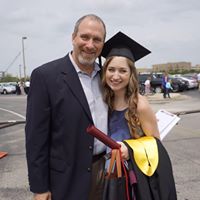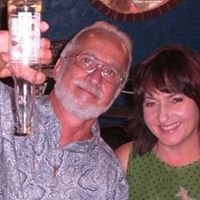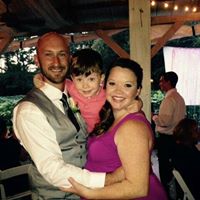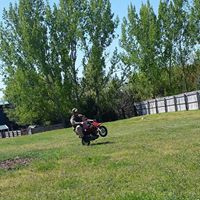Todd W Griffith
age ~57
from Williamsport, PA
- Also known as:
-
- Todd William Griffith
- Todd L Griffith
- Phone and address:
-
881 Grammer Rd, Williamsport, PA 17701
5709162056
Todd Griffith Phones & Addresses
- 881 Grammer Rd, Williamsport, PA 17701 • 5709162056
- 1508 Walnut St, Williamsport, PA 17701 • 5703223713
- Montgomery, PA
- Marietta, GA
- Caldwell, ID
- Atlanta, GA
- 881 Grammer Rd, Williamsport, PA 17701 • 5703223713
Education
-
Degree:Graduate or professional degree
Medicine Doctors

Todd F. Griffith
view sourceSpecialties:
Nephrology
Work:
Metrolina Nephrology Associates
2711 Randolph Rd STE 400, Charlotte, NC 28207
7043482992 (phone), 7043343061 (fax)
Fresenius Medical Care Dialysis Center Charlotte
928 Baxter St, Charlotte, NC 28204
7043482952 (phone), 7043589162 (fax)
2711 Randolph Rd STE 400, Charlotte, NC 28207
7043482992 (phone), 7043343061 (fax)
Fresenius Medical Care Dialysis Center Charlotte
928 Baxter St, Charlotte, NC 28204
7043482952 (phone), 7043589162 (fax)
Education:
Medical School
University of North Carolina School of Medicine at Chapel Hill
Graduated: 1997
University of North Carolina School of Medicine at Chapel Hill
Graduated: 1997
Procedures:
Dialysis Procedures
Electrocardiogram (EKG or ECG)
Vaccine Administration
Electrocardiogram (EKG or ECG)
Vaccine Administration
Conditions:
Chronic Renal Disease
Acute Glomerulonephritis
Acute Renal Failure
Anemia
Atherosclerosis
Acute Glomerulonephritis
Acute Renal Failure
Anemia
Atherosclerosis
Languages:
English
Description:
Dr. Griffith graduated from the University of North Carolina School of Medicine at Chapel Hill in 1997. He works in Charlotte, NC and 1 other location and specializes in Nephrology. Dr. Griffith is affiliated with Carolinas Medical Center, Carolinas Medical Center Mercy, Novant Health Presbyterian Medical Center and Novant Health Rowan Medical Center.

Todd R. Griffith
view sourceSpecialties:
Orthopaedic Surgery
Work:
Knoxville Orthopedic ClinicMaryville Orthopedic Clinic
827 E Lamar Alexander Pkwy, Maryville, TN 37804
8659840900 (phone), 8659841035 (fax)
827 E Lamar Alexander Pkwy, Maryville, TN 37804
8659840900 (phone), 8659841035 (fax)
Education:
Medical School
Temple University School of Medicine
Graduated: 1988
Temple University School of Medicine
Graduated: 1988
Procedures:
Knee Replacement
Lower Leg/Ankle Fractures and Dislocations
Arthrocentesis
Carpal Tunnel Decompression
Hallux Valgus Repair
Hip Replacement
Hip/Femur Fractures and Dislocations
Knee Arthroscopy
Lower Arm/Elbow/Wrist Fractures and Dislocations
Shoulder Arthroscopy
Shoulder Surgery
Lower Leg/Ankle Fractures and Dislocations
Arthrocentesis
Carpal Tunnel Decompression
Hallux Valgus Repair
Hip Replacement
Hip/Femur Fractures and Dislocations
Knee Arthroscopy
Lower Arm/Elbow/Wrist Fractures and Dislocations
Shoulder Arthroscopy
Shoulder Surgery
Conditions:
Fractures, Dislocations, Derangement, and Sprains
Internal Derangement of Knee
Internal Derangement of Knee Cartilage
Osteoarthritis
Plantar Fascitis
Internal Derangement of Knee
Internal Derangement of Knee Cartilage
Osteoarthritis
Plantar Fascitis
Languages:
English
Description:
Dr. Griffith graduated from the Temple University School of Medicine in 1988. He works in Maryville, TN and specializes in Orthopaedic Surgery. Dr. Griffith is affiliated with Blount Memorial Hospital.
Wikipedia References

Todd Griffith
Name / Title
Company / Classification
Phones & Addresses
Managing
Quiet Grace Photography, LLC
President And Co-founder
Discovery Machine Inc
Computer Related Services · Custom Computer Programing · Mfg Computer Peripheral Equipment · Computer Sales · Computer & Software Stores
Computer Related Services · Custom Computer Programing · Mfg Computer Peripheral Equipment · Computer Sales · Computer & Software Stores
454 Pne St, Williamsport, PA 17701
5703290251, 5703295661, 9197825331
5703290251, 5703295661, 9197825331
GRIFFITH RENTALS LLC
GRIFFITH CARPENTRY LLC
ARTIC TRANSPORTATION SERVICE LLC
Resumes

President At Discovery Machine, Inc. And Co-Founder, Discovery Machine, Inc.
view sourcePosition:
President at Discovery Machine, Inc.
Location:
Williamsport, Pennsylvania Area
Industry:
Computer Software
Work:
Discovery Machine, Inc. since Mar 2007
President
Discovery Machine, Inc. Jun 2000 - Mar 2007
CTO
Bucknell University Aug 1998 - Jun 2000
Visiting Assistant Professor
Georgia Institute of Technology 1991 - 1997
Research Assistant
Georgia Tech College of Computing 1991 - 1997
Research Assistance
President
Discovery Machine, Inc. Jun 2000 - Mar 2007
CTO
Bucknell University Aug 1998 - Jun 2000
Visiting Assistant Professor
Georgia Institute of Technology 1991 - 1997
Research Assistant
Georgia Tech College of Computing 1991 - 1997
Research Assistance
Education:
Georgia Institute of Technology 1991 - 1999
Ph.D., Computer Science Bucknell University 1986 - 1991
B.S., B.A., Computer Engineering & Philosophy
Ph.D., Computer Science Bucknell University 1986 - 1991
B.S., B.A., Computer Engineering & Philosophy
Skills:
Cognitive Science
Intelligent Systems
Knowledge Engineering
Computer Science
Agile Methodologies
XML
OOP
Artificial Intelligence
Eclipse
Human Computer Interaction
Spring
Subversion
Python
Machine Learning
Knowledge Management
Software Development
Software Engineering
Visual Studio
Java
Data Mining
Modeling
MySQL
C
SQL
Java Enterprise Edition
C++
Programming
Scrum
Distributed Systems
Object Oriented Design
Architecture
Software Project Management
Web Applications
Visual Basic
Algorithms
Software Design
System Architecture
UML
Integration
Databases
JavaScript
Intelligent Systems
Knowledge Engineering
Computer Science
Agile Methodologies
XML
OOP
Artificial Intelligence
Eclipse
Human Computer Interaction
Spring
Subversion
Python
Machine Learning
Knowledge Management
Software Development
Software Engineering
Visual Studio
Java
Data Mining
Modeling
MySQL
C
SQL
Java Enterprise Edition
C++
Programming
Scrum
Distributed Systems
Object Oriented Design
Architecture
Software Project Management
Web Applications
Visual Basic
Algorithms
Software Design
System Architecture
UML
Integration
Databases
JavaScript

Todd Griffith
view sourceLocation:
United States

Todd Griffith
view sourceLocation:
United States

Todd Griffith
view sourceLocation:
Rockwall, Texas
Industry:
Building Materials
Skills:
Contract Negotiation
Business Strategy
Fire Alarm
Sales Management
Budgets
Account Management
Motivation
Customer Service
Key Account Management
Negotiation
New Business Development
Organization
SAP
Salesforce.com
Building Relationships
Forecasting
Channel Partners
Contractors
Sales Presentations
Product Launch
Highly motivated self-starter
Long Term Business Relationships
Team-oriented
Business Strategy
Fire Alarm
Sales Management
Budgets
Account Management
Motivation
Customer Service
Key Account Management
Negotiation
New Business Development
Organization
SAP
Salesforce.com
Building Relationships
Forecasting
Channel Partners
Contractors
Sales Presentations
Product Launch
Highly motivated self-starter
Long Term Business Relationships
Team-oriented
Languages:
Texas slang

Todd Griffith
view sourceLocation:
United States
Education:
Utah State University 2007 - 2011
Managerial Economics, Financial Economics
Managerial Economics, Financial Economics

Todd Griffith
view sourceLocation:
United States
License Records
Todd R Griffith
License #:
MT020768T - Expired
Category:
Medicine
Type:
Graduate Medical Trainee
Us Patents
-
Computer Interchange Of Knowledge Hierarchies
view source -
US Patent:7757220, Jul 13, 2010
-
Filed:Oct 21, 2004
-
Appl. No.:10/969617
-
Inventors:Todd Griffith - Williamsport PA, US
Robert Ross - Williamsport PA, US
Sean Melody - Williamsport PA, US -
Assignee:Discovery Machine, Inc. - Williamsport PA
-
International Classification:G06F 9/45
G06F 19/00
G06F 17/00
G06F 15/16
G06F 3/00 -
US Classification:717136, 700104, 706 45, 709246, 715748
-
Abstract:A means for exporting a Task-Method-Knowledge (TMK) hierarchy is disclosed using XML as an intermediate file format. Using a computer interface, a user selects the TMK hierarchy, or portion of a TMK hierarchy, to export. The elements of the selected are written to a XML document using an XML schema specifically designed for the task. The order of element export assures that elements and relationships between elements are complete. The exported hierarchy as an XML document is transported to another XML hierarchy and imported. The user selects a receiving TMK project on the receiving system and resolves any naming conflicts.
-
Software And Methods For Task Method Knowledge Hierarchies
view source -
US Patent:7958073, Jun 7, 2011
-
Filed:Dec 23, 2002
-
Appl. No.:10/326386
-
Inventors:Todd Griffith - Williamsport PA, US
Robert Ross - Williamsport PA, US -
Assignee:Discovery Machine, Inc. - Williamsport PA
-
International Classification:G06N 5/00
-
US Classification:706 46, 706 45
-
Abstract:A system is disclosed for the graphical entry of knowledge information in Task-Method-Knowledge (TMK) notation into a computer system. The system comprises methods for entering the TMK hierarchy, defining new tasks , methods , procedures , and subtasks. Defined elements may be reviewed, modified, or deleted. Inputs to the tasks may be defined and the outputs of methods and procedures may be assigned. The hierarchy may be processed towards a solution. The entered hierarchy is displayed with visual clues as to the state and progress of the solution process.
-
Reflective Processing Of Tmk Hierarchies
view source -
US Patent:8019716, Sep 13, 2011
-
Filed:Jul 23, 2007
-
Appl. No.:11/781671
-
Inventors:Todd William Griffith - Williamsport PA, US
Robert Douglas Ross - Williamsport PA, US
Brian Joseph Rogosky - Williamsport PA, US
Jason Randolph Potts - Williamsport PA, US -
Assignee:Discovery Machine, Inc. - Williamsport PA
-
International Classification:G06F 17/00
G06N 7/08
G06N 5/02 -
US Classification:706 59, 706 50
-
Abstract:A method for the automatic examination of knowledge system hierarchies is disclosed. A target TMK hierarchy is represented as a plurality of records in a database. A second TMK hierarchy (a “critic”) is constructed of tasks, subtasks, methods, procedures and actions. The critic hierarchy includes actions that retrieve and examine at least one record of the database representing the target hierarchy. The examination of the record provides a result. The result is of the form of a modification of the processing within the critic hierarchy or of the form of a report or a modification of the target hierarchy's elements, namely, tasks, methods, procedures, actions, class structures, or the relationship between the elements.
-
System And Method For Collecting And Representing Knowledge Using Task-Method-Knowledge With Structure-Behavior-Function In A Computer System
view source -
US Patent:7257455, Aug 14, 2007
-
Filed:Dec 19, 2001
-
Appl. No.:10/028475
-
Inventors:Todd Griffith - Williamsport PA, US
Robert Ross - Williamsport PA, US -
Assignee:Discovery Machine, Inc. - Williamsport PA
-
International Classification:G06F 19/00
-
US Classification:700104, 706 45
-
Abstract:A system and method are provided for using a plurality of knowledge acquisition approaches to provide a solution to a task. The method includes providing at least one input parameter to define the task and at least one solution parameter to define the solution. A determination is made whether to use a Task-Method-Knowledge approach or a Structure-Behavior-Function approach for processing the task and the task is processed based on the input parameter. If the determined approach is the Task-Method-Knowledge approach, the processing may include determining whether a first portion of the task should be processed independently and whether to use the Task-Method-Knowledge approach or the Structure-Behavior-Function approach for processing the first portion. If the determined approach is the Structure-Behavior-Function approach, the processing may include determining whether a second portion of the task should be processed using the Task-Method-Knowledge approach. The solution is examined relative to the solution parameter.

William Todd Griffith
view source
Todd Griffith
view source
Todd Griffith
view source
Todd Griffith
view source
Todd Griffith
view source
Todd Griffith
view source
Todd Griffith
view source
Todd Griffith
view sourceYoutube
Plaxo

Todd Griffith
view sourceMotion picture grip

Todd Griffiths
view sourceStride Technology

Todd W. Griffith, Ph.D.
view sourceFounder, President & CTO at Discovery Machine

Todd M Griffith
view sourceWestminster, MD
Classmates

Todd Griffith
view sourceSchools:
East Canton High School East Canton OH 1975-1979
Community:
Matt Moore, Joyce Luchuck

Todd Griffith
view sourceSchools:
McComb High School Mccomb OH 1980-1984
Community:
Larry Swain, Jayne Foran, Donna Cunningham

Todd Griffith
view sourceSchools:
Clear Creek High School Idaho Springs CO 1985-1989
Community:
Michele Maag, Beth Nibbe

Todd Griffith
view sourceSchools:
Concordia Preparatory Bronxville NY 1958-1962
Community:
Lawrence Seager, Guy Reylek, Jim Zix

Todd Griffith
view sourceSchools:
Concordia Preparatory Bronxville NY 1958-1962
Community:
Lawrence Seager, Guy Reylek, Jim Zix

Todd Griffith
view sourceSchools:
Army Trail Elementary School Addison IL 1971-1972, Solvang Elementary School Solvang CA 1972-1972, Frontier Elementary School Sacramento CA 1973-1975, Green Oaks Fundamental Elementary School Orangevale CA 1975-1976, Louis Pasteur Junior High School Orangevale CA 1976-1978
Community:
Suzie Stone, Victor Liquori, Kellie Weisenberger

Todd Griffith
view sourceSchools:
Wallaceburg District Secondary School Wallaceburg Morocco 1992-1996
Community:
Casey Blackbird, Ron Beausejour, Janet Crawford, Sherril Shephard

Todd Griffith
view sourceSchools:
Tushka High School Tushka OK 1998-2002
Community:
Thomas Danderson, Cathy Castleberry, Jody Casey, Dustin Evans, Deanna Rawlins, Jessi Trent, Aaron Walker, Keesha Richards, Jeremy Cook, Lisa Cathey, Tim Kearns
Myspace
Flickr
Googleplus

Todd Griffith
Work:
RBS - Options Drafter
Education:
Utah State University

Todd Griffith

Todd Griffith

Todd Griffith

Todd Griffith

Todd Griffith

Todd Griffith

Todd Griffith
Get Report for Todd W Griffith from Williamsport, PA, age ~57



















